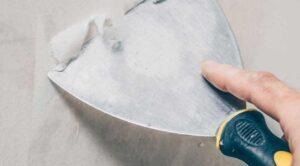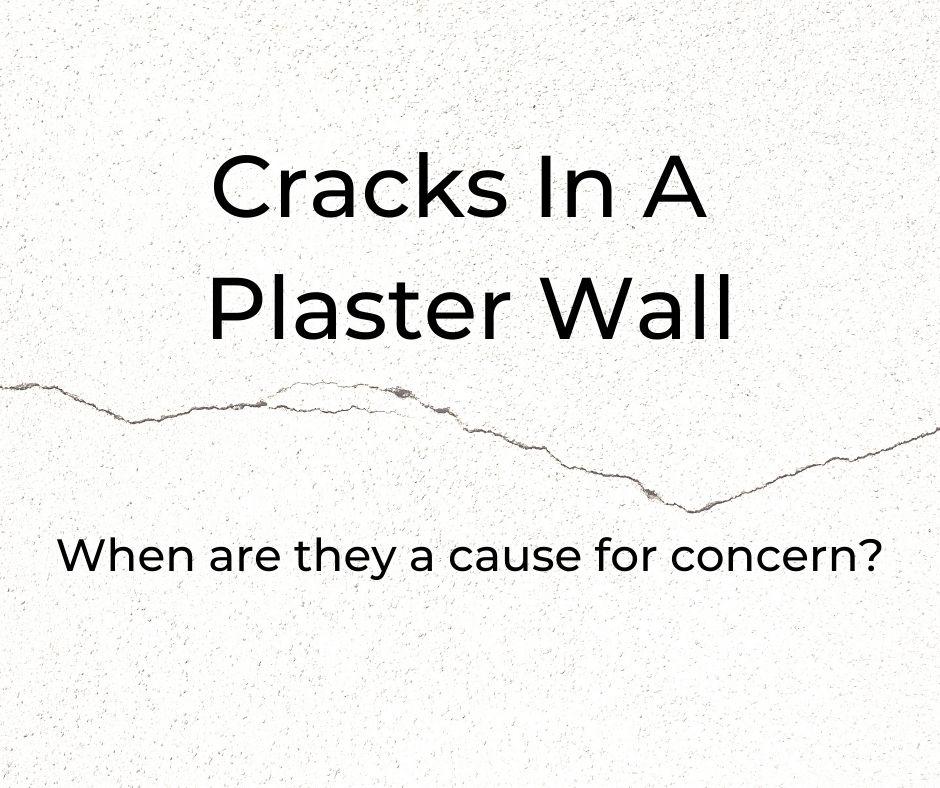Cracks in a wall- Causes and Prevention
Sometimes it feels like the list of renovations, home improvement projects, and general beautification work that needs to be done in your home is getting longer and longer.
Things break over time or through overuse, and certain items or appliances may need to be redone or replaced. But when you discover a crack in a wall or ceiling, you may immediately panic. Fortunately, most cracks in all types of homes, even new construction, are completely normal and simply a sign that the house is settling.
Other causes of cracks include temperature or humidity fluctuations and vibration from traffic if you live near a busy or fast road.
In Australian homes, cracks in the walls are widespread. Some are harmless, while some cracks are longer and deeper than others. But at what point should a crack be cause for concern?

Read on to find out.
Is a small crack in a plaster wall in an older home something to be concerned about, or is it a normal phenomenon?
This is a widespread occurrence. Most plaster walls were covered with wallpaper years ago to hide these cracks. Putty can be used to fill these tiny cracks before painting.
Is it normal for hairline cracks to appear in a new wall?
Hairline cracks less than one millimetre wide or slight cracks one to five millimetres wide are generally not a cause for concern.
If you notice them, they can usually be filled and painted over since the crack is not in the wall itself, but it is in the plaster.
When should you be concerned about cracks in a wall?
Smaller cracks are usually not a cause for concern. However, wider cracks, those that run across doorways or those that run diagonally instead of vertically, can be signs of something more serious.
The cracks are wide
If a crack is between five and fifteen millimetres broad (0.5 to 1.5 centimetres or up to half an inch), it is more problematic, as the cause could be more serious than simply dried plaster or settling.
A damaged wall is considered serious if it is 25 millimetres or wider (2.5 centimeters or one inch), as this could be a sign of structural damage, subsidence (the sudden sinking of a house and its foundation) or something else.
What to do?
A crack this large could mean that the building needs serious work, such as underpinning, to ensure its stability.
The cracks run diagonally
If your home has plastered walls, straight vertical cracks usually form as the plaster expands with moisture and shrinks as it dries. These cracks are normal and are the type of cracks found in new construction.
What to do?
Instead of repairing the cracks immediately (because more will likely appear), wait a while before filling and repainting. We do offer carpentry and painting services
Jagged cracks that run diagonally or look like a staircase moving up the wall can be a sign of structural movement and maybe a bit more serious than cracks that simply run up and down.
What to do now?
You should look at how long and more profound/deep the crack is and call in a structural engineer or a foundation under pinning expert to guide you on the severity of the problem.
The cracks are above door frames
Why does this happen?
Cracks usually occur in the weakest areas of the wall, such as around a window frame. This is generally because a window easily compromises the wall’s strength, causing cracks to appear.
However, a crack at the door frame’s top or a crack extending diagonally from the corner of a door is a bit more serious. This could be another sign of foundation damage or foundation shifting.
You can see daylight through the cracks
A crack that allows daylight to enter your home could be a cause for concern. This is because it means that the entire wall has shifted, not just one side. Usually, a crack shows up on an exterior wall but is not visible on the inside, and vice versa. However, a large crack extending throughout the entire house may signify settlement.
Is there a possibility of cracks occurring in a vacant home?
If your home is often vacant, perhaps because it’s a vacation home, a rental property, or a new home you just bought, you may notice cracks in walls and ceilings.
Why this is so:
Regular and reliable air conditioning not only helps keep you comfortable in your home but also keeps your drywall in good condition. When a home is vacant, the lack of climate control can lead to cracks in the drywall.
What to do?
These cracks can usually be fixed by retaping the drywall joints and repainting. However, suppose a home has been vacant for a very long time. In that case, a detailed inspection from the top to the bottom, in addition to a professional foundation inspection, is a good idea.
Do leaks cause cracks in the wall?
Yes, they do.
If the cracks in your walls show discolouration, such as brown or yellowish stains, then the reason may be the result of water damage in your home.
Why this happens:
Leaks in windows and roofs can cause moisture to seep into the walls of your home. This causes the drywall/plasterboard to get wet, soften and deteriorate, leading to cracks.
What to do?
Before you do anything else, find the cause of the leakage and repair it. Once the repairs are complete and no further moisture damage can occur, you can replace the damaged drywall.
Make sure your home is safe with a foundation inspection
The best way to determine if the cracks in your walls are due to foundation issues is to have a professional foundation inspection performed by experts.
Qld Interior Linings is an expert in all aspects of plastering work, ensuring that you get a high-quality, long-lasting result every time.
They work all over Brisbane, the Sunshine Coast and the Gold Coast.
This article first appeared here https://qldinteriorlinings.com.au/cracks-in-plaster-walls/

Comments are closed